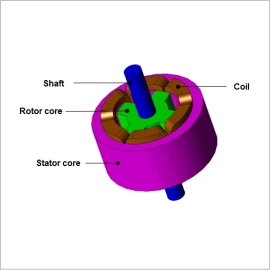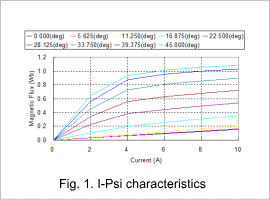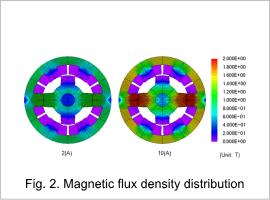Overview

SR motors operate using the nonlinear region of a magnetic steel sheet, so because the inductance displays nonlinear behavior, it is impossible to carry out advanced projections that are accurate with calculation methods that follow linear formulas. Consequently, it becomes necessary to use the finite element method (FEM), which can handle nonlinear magnetic properties in material and minute geometry.
This example presents an evaluation of flux linkage, inductance and torque for each rotor position when the flowing current value is changed.
I-Psi Characteristics
Fig. 1 shows the SR motor’s I-Psi characteristics, fig. 2 shows the current value 2 A and the magnetic flux density distribution for 10 A.
When the tooth is not facing to each other and is at 0 deg, because magnetic resistance is dominant in the main circuit, there is an almost linear increase in magnetic flux linkage in relation to the current. Also, we understand that particularly when the tooth is facing to each other, the more the current is increased, the more the amount of magnetic flux decreases. This is caused by influence from magnetic saturation of the core, as shown in fig. 2. In addition, the bigger the difference in the flux leakage (inductance) when the tooth is facing to each other and when it is not, increases torque so it is also possible to consider how this could be used.




